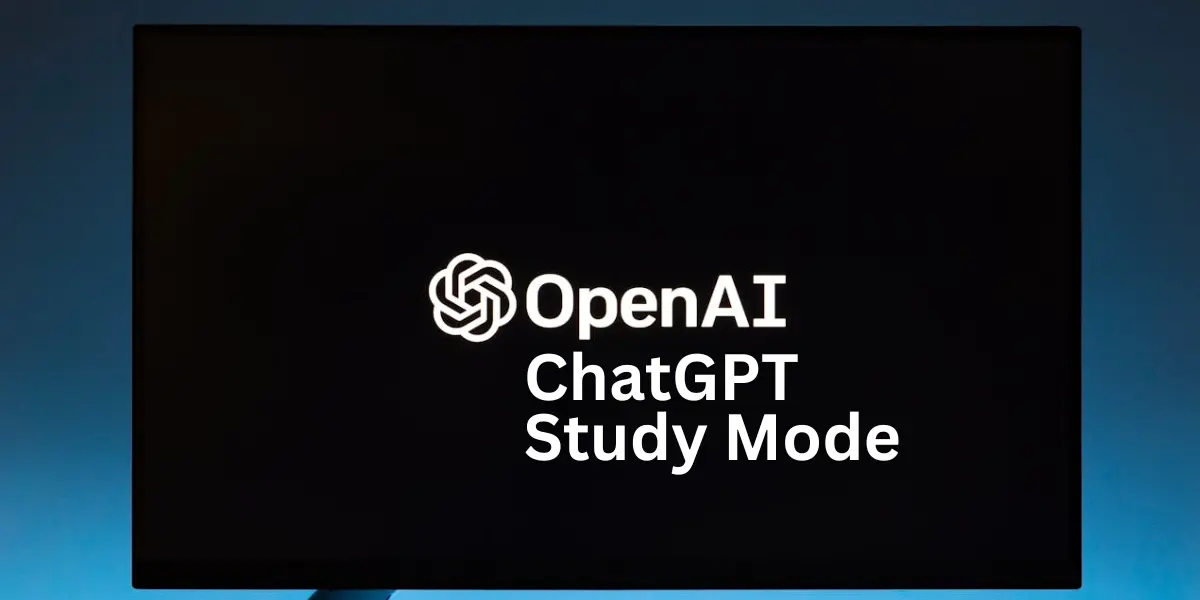ChatGPT Study Mode is a feature launched by OpenAI to transform its AI chatbot into a guided learning tool. It helps users, especially students, learn step-by-step instead of getting quick answers.
What is ChatGPT Study Mode?
Study Mode is a learning-focused feature within ChatGPT. It prioritizes understanding over instant solutions, targeting students and lifelong learners.
Developed with educators, it aims to address concerns about AI misuse in education, like cheating. It encourages responsible use through active engagement.
How Does Study Mode Work?
Study Mode uses interactive prompts, such as Socratic questioning, to guide users through problems. It breaks down complex topics into manageable steps.
Users can toggle it on or off during conversations for flexibility. It’s accessible via the “Study and learn” option in ChatGPT’s tools menu.
Key Features of Study Mode

Interactive Prompts: Employs questions, hints, and self-reflection to foster critical thinking. This encourages users to engage deeply with material.
Scaffolded Responses: Organizes content from simple to complex, reducing cognitive overload. This structure supports gradual learning progression.
Personalized Support: Tailors responses to the user’s skill level, using past chat history if enabled. It provides relevant examples and tips.
Knowledge Checks: Includes quizzes and open-ended questions with feedback. These help users assess understanding and track progress.
Flexible Use: Allows switching between learning and quick-answer modes. This suits varied user needs, from study sessions to casual queries.
Accessibility and Availability
Study Mode is available to logged-in users on Free, Plus, Pro, and Team plans. It works on iOS, Android, web, and desktop platforms.
It’s free in regions like India, broadening access for students globally. OpenAI plans to extend it to ChatGPT Edu subscribers soon.
Why Study Mode Matters
AI tools like ChatGPT have raised concerns about academic integrity, with reports of cheating in universities. Study Mode counters this by promoting active learning.
It aligns with educational goals, helping students prepare for exams or explore new topics. Its guided approach fosters deeper understanding over rote answers.
Educational Impact
Early feedback highlights Study Mode’s effectiveness in subjects like algebra and language learning. Students praise its tutor-like guidance and adaptive pace.
Educators see it as a tool to integrate AI responsibly into classrooms. It supports critical thinking, addressing fears of over-reliance on AI.
Real-World Applications
Exam Preparation: Study Mode helps students break down complex topics, like Game Theory, into phases. It connects concepts to real-life scenarios for better retention.
Lifelong Learning: Professionals or hobbyists can explore new fields with structured guidance. It suits self-paced learning for diverse audiences.
Language Learning: Users report success in practicing languages with tailored exercises. Quizzes and feedback enhance skill development.
Limitations of Study Mode
As a new feature, Study Mode may have inconsistencies due to its reliance on custom instructions. Some users report occasional glitches in response flow.
It lacks advanced visualizations or progress tracking in its current form. OpenAI acknowledges these as areas for future improvement.
How to Use Study Mode Effectively
Start with Clear Questions: Pose specific queries to get targeted guidance. For example, ask “Explain calculus step-by-step” for structured responses.
Engage with Prompts: Answer the Socratic questions or quizzes to maximize learning. This active participation boosts retention.
Use Toggle Wisely: Switch to quick-answer mode for simple queries. Reserve Study Mode for in-depth learning sessions.
Leverage Feedback: Review quiz results and feedback to identify gaps. Adjust your approach based on personalized tips.
Comparison with Other Tools
Unlike traditional tutoring platforms, Study Mode is integrated into ChatGPT, offering instant access. It’s more flexible than rigid educational apps.
Compared to Google’s LearnLM, Study Mode emphasizes conversational learning. Its personalization sets it apart from static study resources.
Educator and Student Feedback
Students from top universities commend Study Mode’s ability to adapt to their pace. They value its structured, interactive approach.
Educators appreciate its focus on critical thinking over rote answers. It’s seen as a step toward ethical AI use in education.
Addressing AI Misuse Concerns
Study Mode responds to criticisms of AI enabling academic dishonesty. By guiding users through learning, it discourages shortcut-seeking behavior.
It aligns with research advocating for AI as a learning partner, not a crutch. This makes it a valuable tool for modern education.
Technical Underpinnings
Study Mode relies on custom system instructions developed with pedagogy experts. These ensure responses align with learning science principles.
It leverages ChatGPT’s memory feature for personalized responses. This enhances relevance without compromising user privacy.
Global Reach and Accessibility
Free access in regions like India makes Study Mode inclusive. It supports students in resource-constrained environments.
Multilingual capabilities allow users to learn in their preferred language. This broadens its appeal across diverse educational contexts.
Challenges and Considerations
Some users may find the interactive prompts time-consuming compared to quick answers. This could deter those seeking instant solutions.
Educators must guide students to use Study Mode effectively. Without proper integration, its benefits may be underutilized.
Conclusion
ChatGPT Study Mode is a groundbreaking feature for AI-driven education. It transforms ChatGPT into a guided learning tool for students and lifelong learners.
With ongoing improvements, it could redefine how AI supports education. Its focus on active learning makes it a promising tool for the future.

Leave a Reply